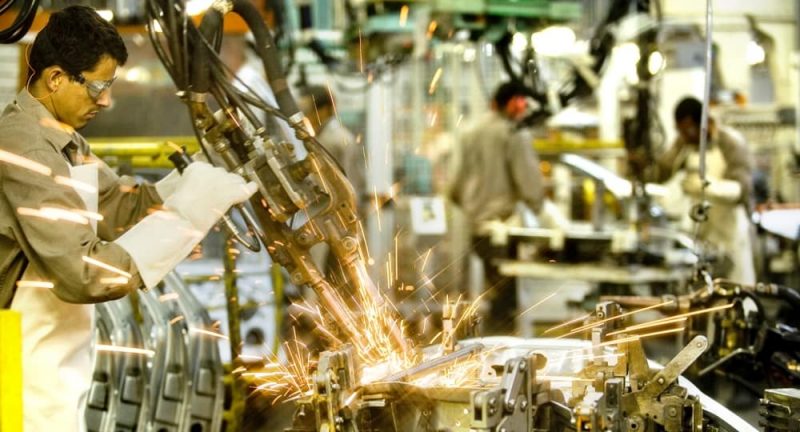A economic activity It is any activity aimed at generating or exchanging goods or services. These activities are the basis of the economy of a territory and are classified according to the process they involve and the product or service they produce or offer in:
- Primary activities. They are those that are responsible for the extraction of natural resources. For instance: agriculture, mining and livestock.
- Secondary activities. They are those that are responsible for the production of goods generated from raw materials. For instance: the automotive industry, the textile industry and the pharmaceutical industry.
- Tertiary activities. They are those that are responsible for providing intangible goods and services to the population. For instance: restaurants, cinemas and means of transport.
All types of economic activities are essential to meet the needs of a certain population.
In some cases, it is also common to speak of two other types of economic activities: quaternary activities and quinary activities:
- The quaternary sector is one that is made up of activities related to knowledge and innovation. For instance: the investigation.
- The quinary sector is one that includes all non-profit activities. For instance: The education.
Primary activities

The primary economic activities are those that are based on extracting goods and resources from nature. These activities were the first to be developed by humans and are the beginning of the production chain.
Some goods extracted from nature are suitable to be consumed in the same way in which they are extracted, but many others are the basis for the production of new goods.
In countries with greater economic development, primary activities do not require a large number of labor, due to technological improvements that allow the replacement of the labor force by machines and devices. However, this type of activity is usually the basis of underdeveloped economies and is a great source of work in those territories.
Examples of primary economic activities
- farming. It is the activity that is responsible for the production of vegetable crops. For instance:
- Cereals
- Oilseeds
- Sugar cane
- Vine
- Cotton
- Citrus
- Cattle raising. It is the activity that is responsible for animal husbandry. For instance:
- Vaccine
- Goat
- Swine
- Sheep
- Fishing. It is the activity that is responsible for the exploitation of species from rivers and seas.
- Forestry. It is the activity that is responsible for the exploitation of forests and jungles.
- Mining. It is the activity that is responsible for the exploitation and extraction of mineral resources from the soil. For instance:
- Iron
- Copper
- Lead
- Gold
- Silver
Secondary activities

The secondary economic activities are those that are dedicated to creating finished products. This activity usually uses the resources produced and obtained by the primary sector and then transform them into other goods.
Among these types of activities, the following stand out:
- Industrial activity. It uses energy sources to transform a good or resource. It can be light, when manufacturing consumer goods, or heavy, when manufacturing capital goods that are used for the production of consumer goods.
- Craft activity. It uses raw materials to make products by hand through a non-industrial process.
Starting with the Industrial Revolution, primary activity was giving way to secondary, with special emphasis on the more developed countries. These activities are key within the economy since they obtain a raw material and transform it into a product with greater value.
Examples of secondary economic activities
- Plastics industry
- Textile industry
- Chemical industry
- Tobacco industry
- Oil industry
- Steel industry
- Automotive industry
- Food industry
- Cement industry
- Aeronautical industry
- Astronautical industry
- Robotic industry
- Pharmaceutical industry
- Railway industry
- Editorial industry
- Cosmetic industry
- Shipping industry
- Paper industry
- Arms industry
- Home appliance industry
- Energetic industry
Tertiary activities

The tertiary economic activities are those that are dedicated to providing services that meet the needs of people. Tertiary activities include services such as advisory, customer service, consulting, and legal and financial services.
Unlike the primary and secondary sectors, the tertiary sector of the economy is not related to tangible goods but to intangible goods that are provided both to final consumers and to other companies within the production chain.
Tertiary activities are usually a great source of income in the economies of more developed countries. In addition, they are a great source of work because, due to the presence of more and better technology in these countries, primary and secondary activities tend to require little labor.
Examples of tertiary economic activities
- Transport
- Media
- Banking
- Casinos
- Telecommunications
- Health services
- Hospitality
- Real estate
- Financial services
- Social media management
- Barber Shop
- Appliance repair
- Security services
- Funeral services
- Legal services
- Entertainment services
- sightseeing
- Retail sales
- Restaurants and gastronomy
